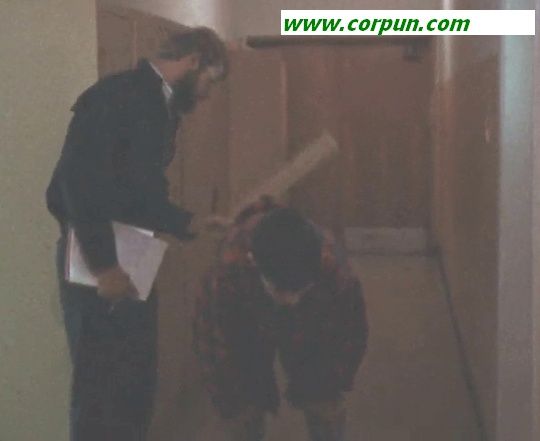The St John's Schools of Canada. There were three of these, all small Anglican private boarding schools for boys aged 12 to 18, all now closed:
- St John's Cathedral Boys' School, Selkirk, Manitoba, 1962 - 1990
- St John's School of Alberta, Stony Plain, near Edmonton, 1967 - 2008
- St John's School of Ontario, near Toronto, 1977 - 1989
 The St John's schools were very unusual. They were set up to be distinctly different from any other school in Canada. The founders wanted to make a stand against certain aspects of modernity that they thought were damaging Canadian life. Specifically, they believed youngsters were insufficiently challenged by the education system.
The St John's schools were very unusual. They were set up to be distinctly different from any other school in Canada. The founders wanted to make a stand against certain aspects of modernity that they thought were damaging Canadian life. Specifically, they believed youngsters were insufficiently challenged by the education system.
The academic curriculum was to be relentlessly "traditional", with old-fashioned grammar instead of the progressive self-expression ideas that had become fashionable. Students were expected to become fluently bilingual in French and English. There were Latin lessons. Proper history had to be learned. The educational philosophy was inspired by the mediaeval "classical trivium" advocated by the English writer Dorothy L. Sayers -- grammar, logic and rhetoric.(1)
(1) Sayers, Dorothy L. The Lost Tools of Learning, 1947.
But there were, and are, other such schools, notably some "classical" Christian independent schools in the USA. What made the St John's schools unique was their outdoor programme. The idea was to turn boys into men by means of a gruelling programme of physical challenges.
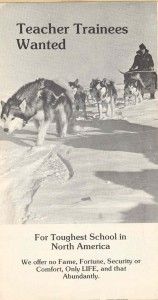 The story began in 1958 when Ted Byfield, a Manitoba-based conservative journalist, and his schoolteacher friend Frank Wiens, decided to establish a weekend school associated with the St John's Cathedral in Winnipeg, whose Archbishop gave it his blessing. It was designed to counter what they saw as society's increasingly secular attitudes, to develop a spirit of adventure, and to teach boys to think for themselves.
The story began in 1958 when Ted Byfield, a Manitoba-based conservative journalist, and his schoolteacher friend Frank Wiens, decided to establish a weekend school associated with the St John's Cathedral in Winnipeg, whose Archbishop gave it his blessing. It was designed to counter what they saw as society's increasingly secular attitudes, to develop a spirit of adventure, and to teach boys to think for themselves.
Out of this grew, in 1962, the first full-time boarding school, St John's Cathedral Boys' School, which started with 58 students in an abandoned hospital near Selkirk, Manitoba, under the auspices of an Anglican outfit spearheaded by Byfield and later to be called the Company of the Cross . It would be, said its own publicity material, "the toughest school in North America".
. It would be, said its own publicity material, "the toughest school in North America".
The school was run by Christians on a non-profit basis. To keep fees low, everything was done on a shoestring. Teachers were paid $1 a day plus board and lodging, so they had to be highly dedicated. Costs were covered partly by sales of meat and honey from the boys' own farming and beekeeping activities. There were hardly any ancillary staff: cooking, cleaning and maintenance were all done by the students.
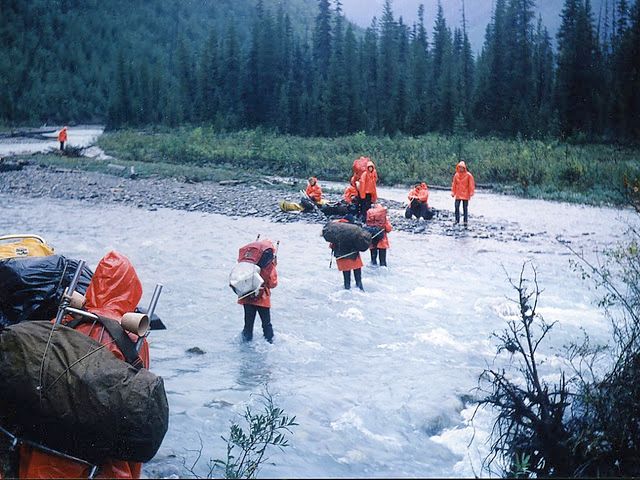 Demand grew, and it was decided to open more small schools in other parts of Canada rather than expand the existing one beyond its ideal small size. None of the schools ever had more than 200 students at any one time. The Alberta school was opened in 1968 and the Ontario one in 1977.
Demand grew, and it was decided to open more small schools in other parts of Canada rather than expand the existing one beyond its ideal small size. None of the schools ever had more than 200 students at any one time. The Alberta school was opened in 1968 and the Ontario one in 1977.
The regime was exceptionally rigorous. In winter there were compulsory snowshoe treks across the windswept frozen prairie. In summer the boys were made to spend weeks travelling thousands of miles in canoes. These physical ordeals were supposed to echo the life of the 18th- and 19th-century Canadian fur-trading voyageur. The school stated in a 1964 report: "Times without number we have seen the withdrawing, the defeated, the misfit, the lazy and the sassy emerge from some gruelling expedition as a very changed person. The change is always for the better. To some it has meant a change in their whole view of life, the first victory after a long series of defeats."
All this was highly controversial in liberal Canada. There was some hostile media coverage , especially after a canoeing tragedy in 1978 when 13 lives were lost. Some policy adjustments were made, but the group pressed ahead with its fundamental ideas unchanged.
, especially after a canoeing tragedy in 1978 when 13 lives were lost. Some policy adjustments were made, but the group pressed ahead with its fundamental ideas unchanged.
Turning to the question of discipline, the 1964 report continued:
We learned also the value of having rules, backed up by direct physical discipline. We found that a youngster's security lay in discovering the bounds set on his behavior and in shaping his life within those bounds. To punish a deed one minute and not the next, to threaten and not to execute, to nag and not to forgive, was in fact a cruelty to children.
The essential policy must be: Here are the rules. Break them and you will be spanked. Break them he will because he is human. And spanked he must be. But that is the end of it. There need be no brooding post-mortems. The deed was done and the price was paid. It no longer exists. That vital understanding between teacher and pupil is not disturbed.
Going into more detail about the disciplinary arrangements at the original school, Byfield wrote many years later:
Most traditional of all was the discipline. Rules were enforced with a flat stick across the seat of the pants -- failure to complete an assignment, four swats; late for a work detail, three swats; caught smoking, six swats. Compared with what would follow over the next three decades, it was barbarous. Compared with what had gone before, over the previous two to three millennia of human history, it was unremarkable.
A former (1980s) student has described the St John's form of corporal punishment as "a 1x2 stick across the ass -- a punishment that was unusually painful even by adult standards".(2)
(2) Quarry, Brendan. Ghosts of Lake Timiskaming, 2002.
The same procedure, which Byfield always called "spanking", was introduced from the outset at the other two schools. The implement was officially called a "swat stick" but appears to be much the same thing as what in the USA is called a paddle. Probably the word "paddle" was avoided because, in the St John's context, with its emphasis on canoeing, that word had an entirely different meaning.
We do not know whether it was Ted Byfield or Frank Wiens who decided that this would be the schools' routine form of punishment. Byfield as a schoolboy in 1940s Toronto had been punished in the more usual Canadian way, with a strap on the hands.
In 2002 a then-recent graduate of the Alberta school (by that time the only one of the three still operating) sent the present author the following photograph, claiming that it was a paddle he had "liberated" from the discipline master's office. A cigarette is included to give an idea of the scale:
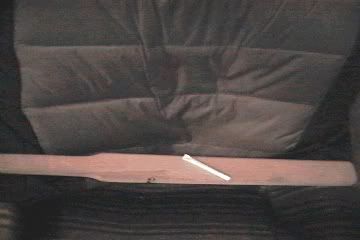
This ex-student told me there were paddlings at the school practically every day.
But a former member of the SJSA staff later told me that the object in the picture was more elaborate and larger than the usual implement, which he described as a simple chunk of spruce, ¾ in thick, 1½ inches wide and 16" long, with the corners sanded smooth, and the word "Official" inscribed on it in black felt marker. (We get a glimpse of it in the video clip below, most clearly in the still-frame capture at the top of this page. That version, at the Manitoba school in 1974, was clearly longer than 16 inches. Other accounts recall a stick 3 feet long. Policy must have varied either over time and/or between the three schools.) The paddle in the ex-student's photo, he thought, was probably a special ceremonial one presented to the headmaster by a graduating class. This, he said, happened on several occasions.
He did, however, confirm what the former student had said about the frequency of corporal punishment, though it was used somewhat less in the 1990s than earlier. In his view, the swat stick stung a lot but rarely caused bruises. (Again, other accounts differ on the latter point.)
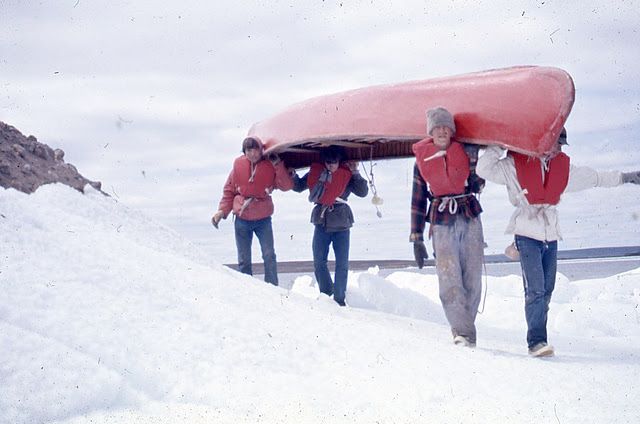 He went on to provide a rough "tariff" from earlier days at the Alberta school: 3 swats for homework not done, chores not done well, or talking after lights out. Just one swat for being late to class. But smoking, cheating, lying, and skipping class all brought ten swats. These figures differ in detail from those set out in the Byfield article, which is about the Manitoba school.
He went on to provide a rough "tariff" from earlier days at the Alberta school: 3 swats for homework not done, chores not done well, or talking after lights out. Just one swat for being late to class. But smoking, cheating, lying, and skipping class all brought ten swats. These figures differ in detail from those set out in the Byfield article, which is about the Manitoba school.
Some masters had their own variations, such as one swat for every 5% below the pass mark in a weekly maths test.
Typically, the former master told me, many new boys would pick up perhaps 100 swats in their first few weeks, and maybe another 100 by the end of the year. After about grade 9, they tended to get the hang of things and behave mostly as required, though a few students might receive as many 1,000 swats throughout their time at the school, and a few others almost no swats at all.
Many boys regretted the later decline in the use of CP, because getting swats wiped the slate clean and, although it hurt, it was over much quicker than any alternative punishment. According to my source, "it was largely accepted by the boys because the staff made it clear that it was the action they were dealing with, not the boy. I may swat a student at one point in the day, and within two hours give him high praise for setting a new record for relacing a snowshoe".
This appears to bear out the 1964 report's statement: "There need be no brooding post-mortems. The deed was done and the price was paid. It no longer exists."
An article on the schools (c.1980) in the Canadian edition of the Reader's Digest reported:
More important, every boy before admittance must want to be there, regardless of his parents' wishes. He does so with full knowledge of the discipline, ranging from extra chores to swats (as few as three for skipping homework or talking after lights-out; as many as ten for smoking). If a boy feels wronged he can appeal to the headmaster; if swats were unfairly given, the teacher apologizes to both boy and parents. Surprisingly, boys rarely go to this higher court.
"I'd rather be rapped on the bottom and get it over with than be tongue-whipped by a public-school teacher all day," Ian Harling told his mother. Todd Michell, when asked how he had raised his marks, said wryly, "Mother, it was a one-by-two-inch stick!"
An undated recruiting booklet for the Company of the Cross imagines in fictional form a visit to the Manitoba school by prospective parents. Outside the school office they come upon a boy who reeks of chicken manure:
"Can I help you?" said the boy.
They just wanted to see through the school, Mrs. Jones explained. They had heard about it at Saskatoon. Someone had suggested they visit it.
"Any of us could show you through," said the boy. "I'd do it myself only I've been cleaning the barn ..."
A sudden distraction from within the office brought the conversation to a halt. There were three resounding whacks. The door opened. Another boy, perhaps 16, emerged, rubbing his seat and with evident effort smiling. "A rule," said a voice from within, "is a rule."
The first-ever "spanking" at St John's Alberta was administered on the school's very first day in September 1968 to 12-year-old Brian Sorokin, who later described himself as "a big fan of the school" and wrote on the school's website in 2000:
As darkness fell, I was directed toward the back of the staff homes to collect my gear. This consisted of a raincoat and hat, a paddle, life jacket, mess tin and canvas duffel bag. Because the school was not ready to be occupied, I was told we would be sleeping outdoors and to make my way down to the flats below the school for evening prayer and lights out.
[...] Once at the camp fire, we were told the Grade 7 and 8 boys would be sleeping on the far side of the flats along the river bank, while the Grade 9 and 10 boys would camp at this site. After other instructions we were told to kneel for prayer. With the conclusion of the Lord's Prayer I made my way across the field to a line of plastic green tents and selected a spot to bed down in. As the tent filled up with other boys, a grizzled old man, Wayne Cooper, appeared in the entry with a dog (Nikki), who looked more like a wolf, to announce "stand by till morning".
Unaware of the meaning of these instructions I rolled over and began talking to Scott Caithness. A few minutes later Mr. Cooper returned to ask "who's been talking?" Silence was heard in the tent. "Whoever was talking, outside in ten seconds or the whole tent comes out." I gingerly crawled outside in my underwear and confessed. The next words are ingrained in every SJSA boy's memory. "Bend Over". Three swats later and ninety minutes into the SJSA inaugural year, I was back in my sleeping bag with a new appreciation of "stand by till morning" and the strength of Mr. Cooper's arm.
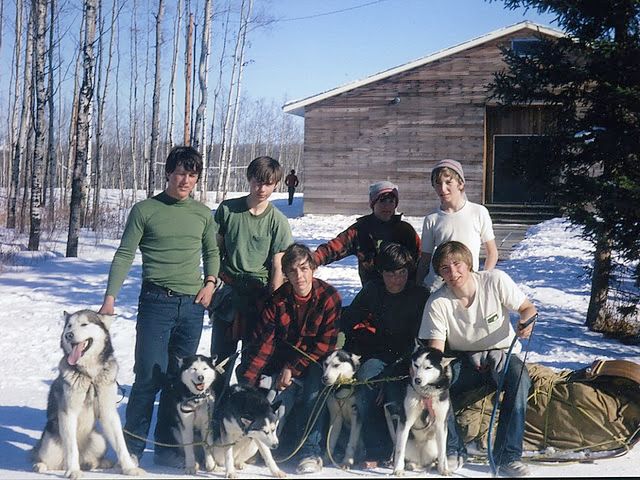 In 1997 an alumnus of the school wrote to the school's website:
In 1997 an alumnus of the school wrote to the school's website:
Can't believe I found a website dedicated to St. John's. Is corporal punishment still the rule? [...]
The answer given by the SJSA's webmaster was:
Corporal punishment -- yes. [...]
The SJSA application form in 1998 included the following:
3. Are you aware that Saint John's is a highly structured and disciplined setting that uses corporal punishment as one alternative in its discipline system?
Yes / No
4. How do you discipline your son at home? How does he respond?
SJSA ceased using the swat stick around 2002. It would have had to stop anyway after the Canadian Supreme Court ruling of 2004 which effectively outlawed school CP, even in private schools.
SJSA closed down in 2008 after 41 years, citing the impossibility of recruiting enough suitable staff. It is now a Foundation using the proceeds from the sale of the premises to make grants to like-minded projects and groups.
using the proceeds from the sale of the premises to make grants to like-minded projects and groups.
Meanwhile Ted Byfield wrote further articles in support of corporal punishment, such as this in Aug 2001 and this in Jan 2002.
RELATED VIDEO CLIPS:
In 1974 the National Film Board of Canada made a 27-minute cinema verité documentary about the St John's Manitoba school called The New Boys. You can view the whole film here.
Remarkably, it turns out to contain a fleeting glimpse of a real paddling with the swat stick. The time-honoured words of doom, "Bend over", are heard from a teacher, and there is one resoundingly loud whack, but in the original version it is hard to see what is going on because the scene is so poorly lit:
This video clip is not currently available.
IMPORTANT: Copyright in this video material rests with the original copyright holders. This brief excerpt is reproduced under the "fair use" doctrine  for private, non-profit, historical research and education purposes only. It must not be redistributed or republished in any commercial context.
for private, non-profit, historical research and education purposes only. It must not be redistributed or republished in any commercial context.
I have enhanced the clip by increasing the brightness and contrast to counteract the underexposure, and the result is very revealing. It at once becomes clear that the student being spanked in a corridor is not the same boy as is seen, immediately previously, being reprimanded over the state of repair of a door frame. He is older and bigger and darker-haired than the small blond boy first seen. There is a rather sneaky edit in the film giving the false impression that the punishment followed on from the reprimand. Not only is it not the same boy, it is not even the same corridor:
What we can now see is very rare, or possibly unique, footage of real-life serious corporal punishment from half a century ago. The calm, solemn command to bend over produces instant and unquestioning, if resigned, obedience. We get the impression that the boy is probably already rather familiar with this procedure. He assumes the required posture with his hands on his shins. The left-handed master takes a moment to lift up the back of the boy's jacket where it was covering the target area. He brings the paddle right up and back before expertly delivering a seriously powerful swat. As soon as it is evident that on this occasion there is to be just the one whack, the boy stands up.
Clearly, from both versions of the "tariff" quoted above -- ten swats for skipping class, by one account -- a one-swat spanking was a very minor punishment in this system. We are not told what the punishment is for in this case, but the mood is palpably serious. Perhaps there would have been more swats, but for the presence of a camera crew.
The following version of the clip runs at about half-speed, giving us more time to get a good impression of the sequence of events:
Now we can see that as the boy stands up, he is swaying slightly. Momentarily he avoids looking the teacher in the eye. I think there is a hint on his face of the pain in his buttocks.
Here finally is a sequence of still captures from the enhanced clip:

Boy being told to bend over

Boy starts to assume punishment position
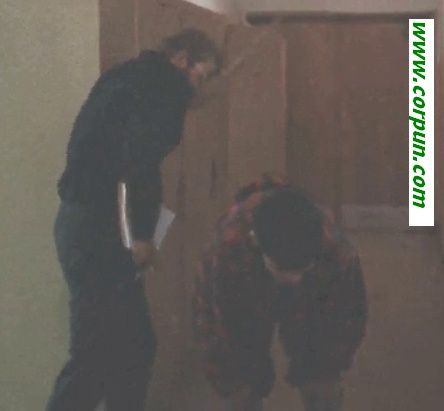
Master paddling bending student
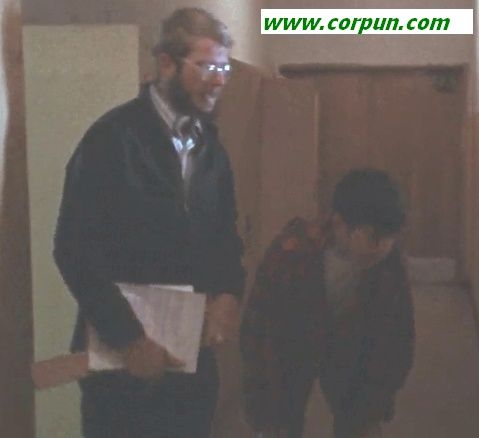
Student in process of standing up again after being spanked

Master talks to student he has just paddled
BACKGROUND READING (not specifically about CP):
-- Wikipedia article
-- Profile of Ted Byfield (1999) in The Canadian Encyclopedia
-- St John's Memories
-- St. John's Cathedral Boys' School of Manitoba Unofficial Page
